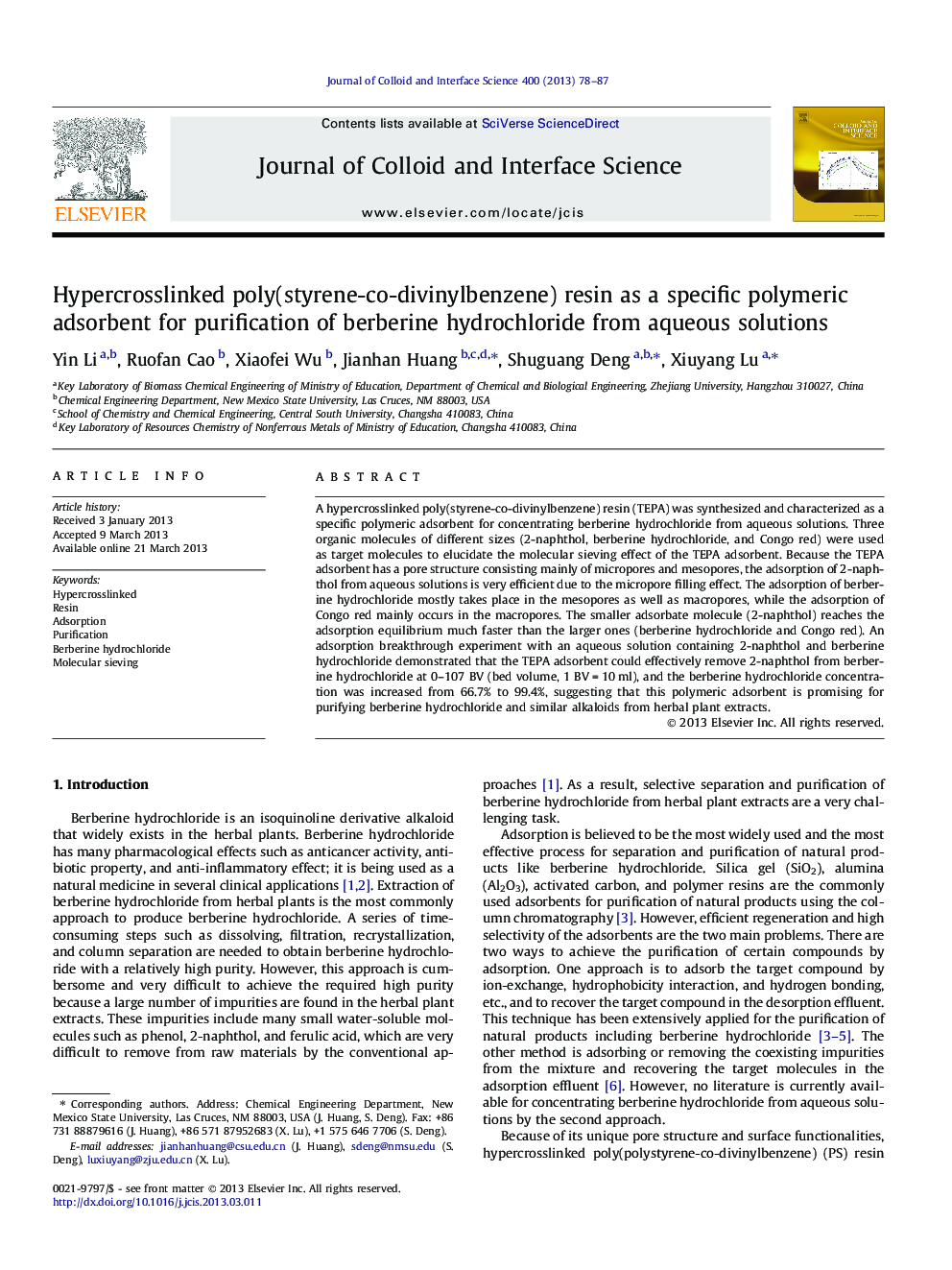| کد مقاله | کد نشریه | سال انتشار | مقاله انگلیسی | نسخه تمام متن |
|---|---|---|---|---|
| 607707 | 1454595 | 2013 | 10 صفحه PDF | دانلود رایگان |

• Polymeric adsorbent with predominant micropores and mesopores.
• Demonstration of molecular sieving effect in the polymeric adsorbent.
• Adsorption of 2-naphthol, berberine hydrochloride, and Congo red.
• Effective separation of berberine hydrochloride and 2-naphthol.
A hypercrosslinked poly(styrene-co-divinylbenzene) resin (TEPA) was synthesized and characterized as a specific polymeric adsorbent for concentrating berberine hydrochloride from aqueous solutions. Three organic molecules of different sizes (2-naphthol, berberine hydrochloride, and Congo red) were used as target molecules to elucidate the molecular sieving effect of the TEPA adsorbent. Because the TEPA adsorbent has a pore structure consisting mainly of micropores and mesopores, the adsorption of 2-naphthol from aqueous solutions is very efficient due to the micropore filling effect. The adsorption of berberine hydrochloride mostly takes place in the mesopores as well as macropores, while the adsorption of Congo red mainly occurs in the macropores. The smaller adsorbate molecule (2-naphthol) reaches the adsorption equilibrium much faster than the larger ones (berberine hydrochloride and Congo red). An adsorption breakthrough experiment with an aqueous solution containing 2-naphthol and berberine hydrochloride demonstrated that the TEPA adsorbent could effectively remove 2-naphthol from berberine hydrochloride at 0–107 BV (bed volume, 1 BV = 10 ml), and the berberine hydrochloride concentration was increased from 66.7% to 99.4%, suggesting that this polymeric adsorbent is promising for purifying berberine hydrochloride and similar alkaloids from herbal plant extracts.
Figure optionsDownload high-quality image (29 K)Download as PowerPoint slide
Journal: Journal of Colloid and Interface Science - Volume 400, 15 June 2013, Pages 78–87